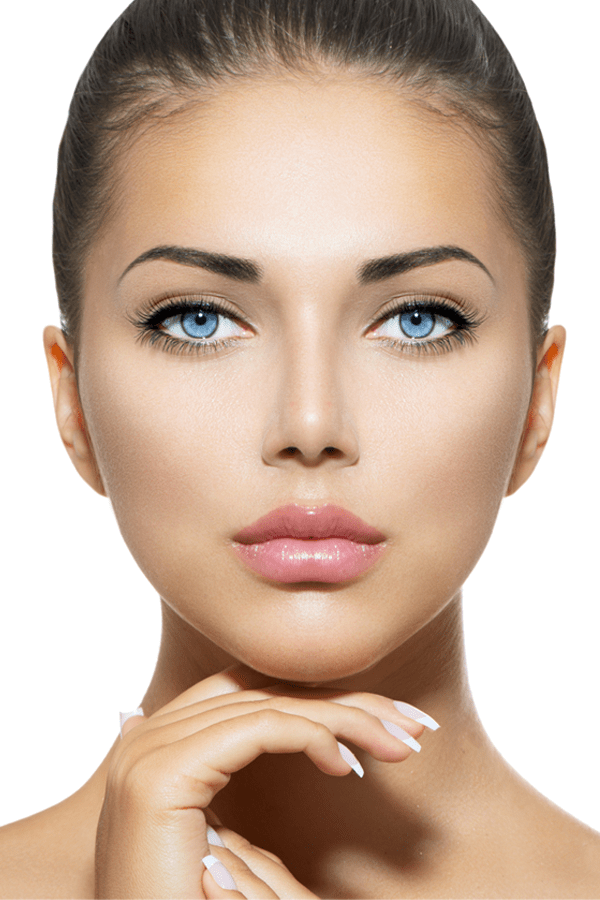
Aesthetics
Majority of patients who seek orthodontic treatment want their esthetics to be improved as the result of orthodontic treatment. Well proportioned face and a straight looking teeth contribute a lot to one’s esthetic appeal. Orthodontic treatment can do wonders to enhance the esthetic appeal of the smile in particular and the face in general.
Facial attractiveness is generally the result of two “ideal” components.
These components are: Symmetry and Harmony
- Can be defined as the mirror image of parts or components about an axis.
- Can be defined as a recurring theme which may be geometric figures or mathematical relationships within the face.
- The Greeks said that beauty is mathematics. If that is true then perhaps there is a mathematical code, formula, relationship or even a number that can describe facial beauty.
THE GOLDEN RATIO
This particular relationship is the “Golden Ratio“. It is a mathematical ratio that seems to appear recurrently in beautiful things in nature as well as in other things that are seen as “Beautiful”.
The “Golden Ratio” is a mathematical ratio of 1.618:1, and the number 1.618 is called “Phi“.
Many things found in nature have parts that are in a ratio of 1.618
Orthodontic treatment done in growing age can achieve these golden proportions to certain extent by modulating the growth of lower facial bones. For example, children having small chin if treated in growing age by growth modification therapy, can have increased length of the jaws to improve facial proportions.
Even in adults, When teeth achieve better position after orthodontic treatment there is a positive effect on face proportions.
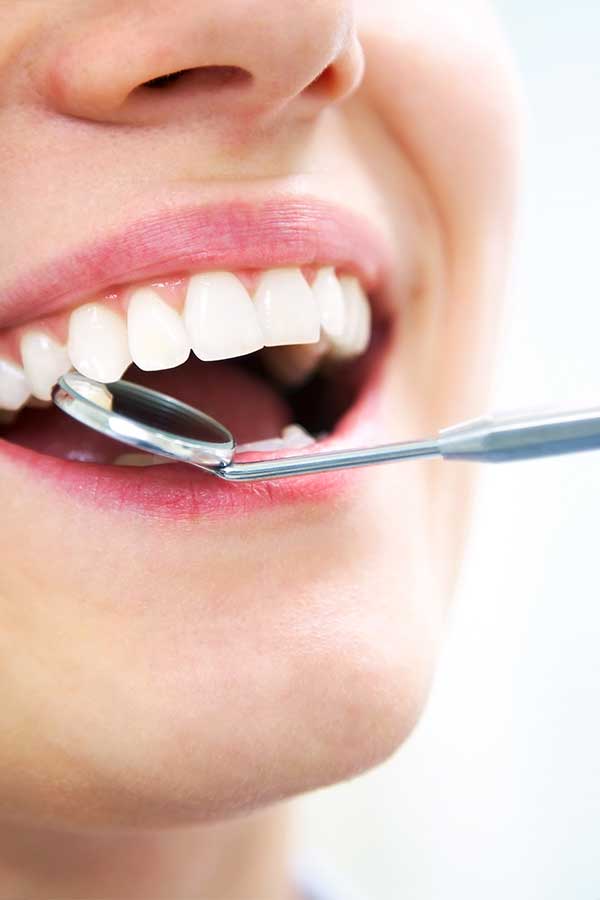
Smile Aesthetics
Smile evaluation is generally done by photograph and filming. Normally there are 3 types of smiles
- When people greet each other at social gathering etc. In this smile the mouth commissures are pulled up without showing teeth
- It is characterised by movement of lower lip and wide movement of upper lips. This also is a spontaneous smile which realistically depicts patient’s smile design.
Normally the esthetic planning of smile is based on the complex smile.
Vertical position of maxillary incisors
Is the key element for good smile esthetics. The gingival contour of crown of the maxillary incisor should be along the lower margin of upper lip in full smile and incisal margin should be along the upper margin of lower lip. Incisal edge of the central incisor should be lower that the canine ensuring dominanace of central incisor. The central incisor should be longer than the lateral incisor by 1 mm in women and 0.5 mm in men.
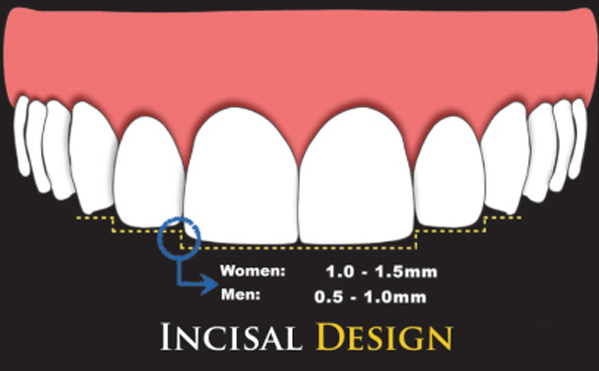
Smile Illustration
Ideal Design
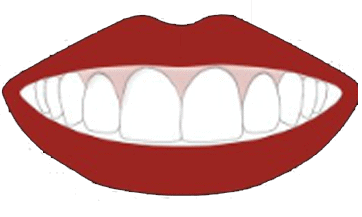
Smile Aesthetic Zone – In Blue
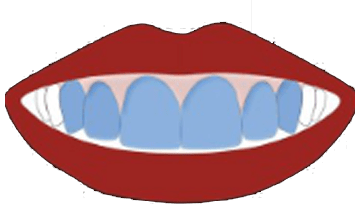
Dominance Of Central Incisors – In Yellow
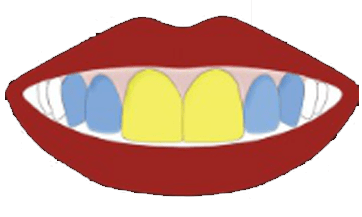
Ratio and symmetry of maxillary central incisors
W/H ratio of central incisors should be 75 – 85%. Lesser than 75 % tend towards longer incisors and more than 85 % towards wider incisors. Both central incisors should be symmetrical and identical in shape and size.
Different width-height ratio of central incisors
Ideal ratio, between 75 and 85%
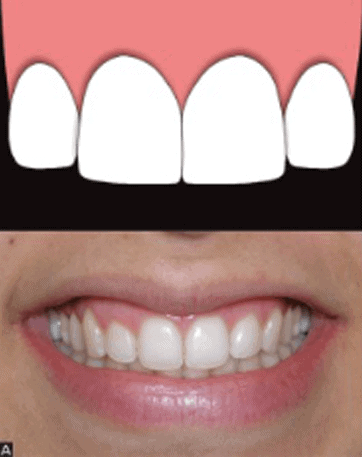
Long teeth with ratio < 75%
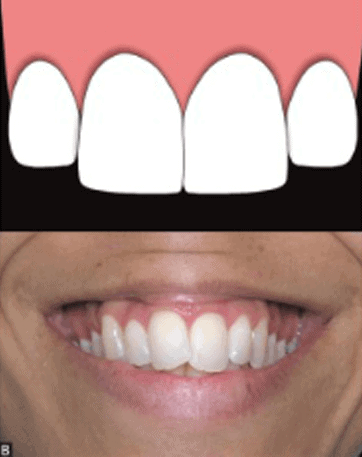
Short or squared teeth with ratio > 85%
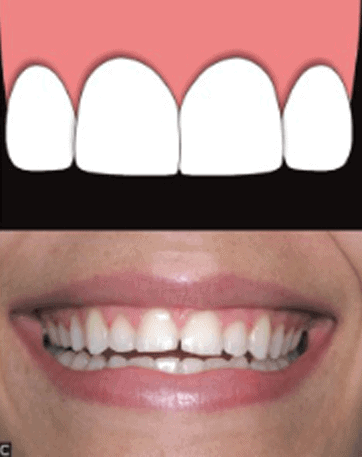
Visual proportion amongst maxillary front teeth
Visible lateral incisor width accounts for 62% of central incisor width while visible canine width accounts for 62% of lateral incisor width.
Limits of esthetic acceptability of incisal and gingival asymmetry in the esthetic zone:
- 0.5 mm1
- 1.0 mm1
- 2.0 mm17
- from 1.5 to 2.0 mm11,14; and
- from 1.5 to 2.0 mm
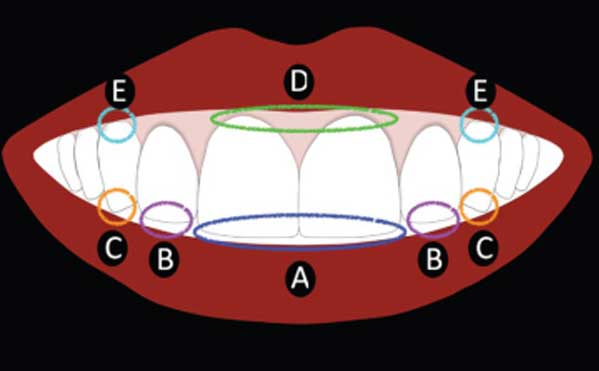
Smile with golden ratio (62%) between teeth in the esthetic zone.
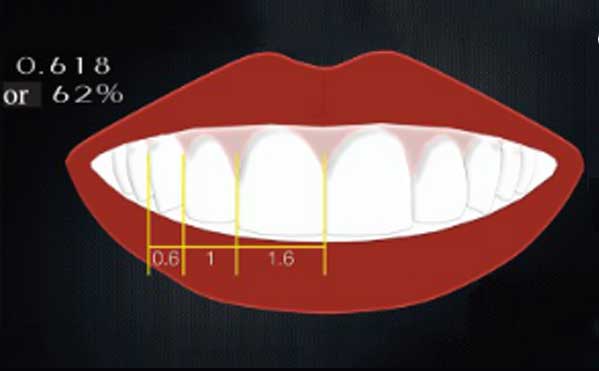
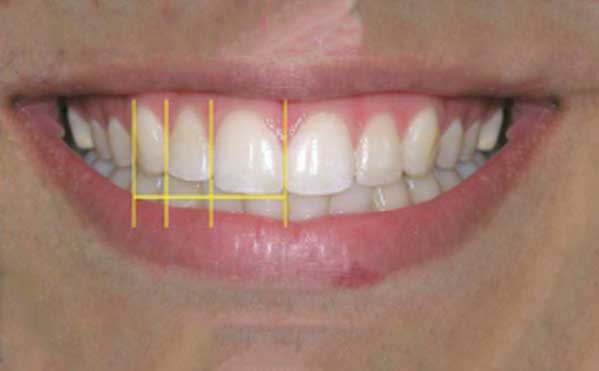
Spaces in maxillary front teeth
There should be no spaces
Gingival architecture
Maxillary Canine gingival margin must coincide with central incisor gingival margin whereas that of lateral incisor gingival margin must be slightly below ( 0.5 – 1 mm)


Gingival exposure
In a jovial and youthful smile complete exposure of maxillary incisors and little ( less than 3 mm) gingival ( gum) exposure is considered acceptable.
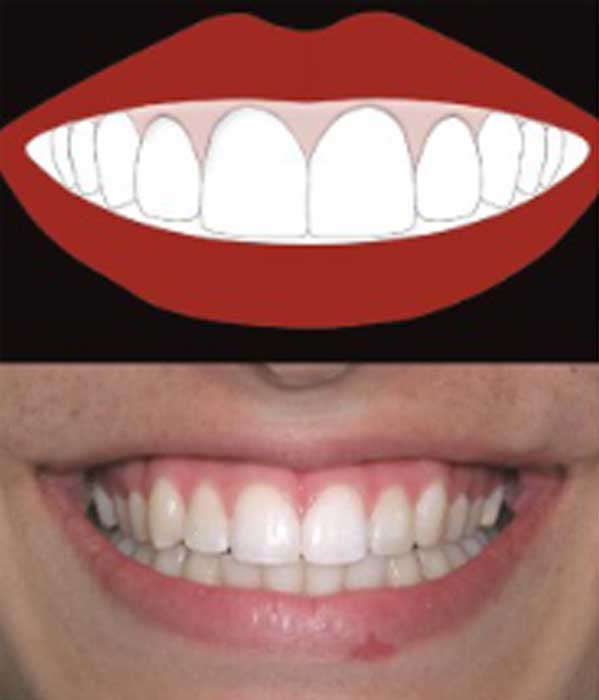
High smile, characterized by total exposure of clinical crowns and continuous strip of gingival tissue
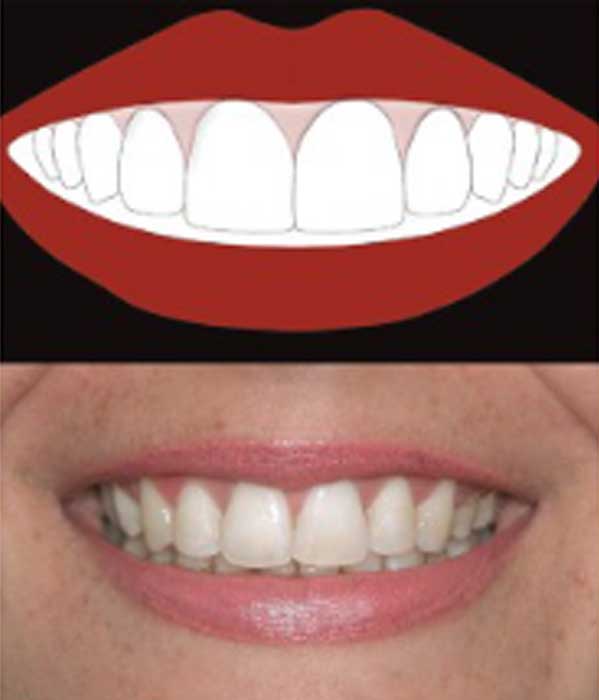
medium smile, characterized by great (75%) or total (100%) exposure of clinical crowns and interdental or interproximal papillae
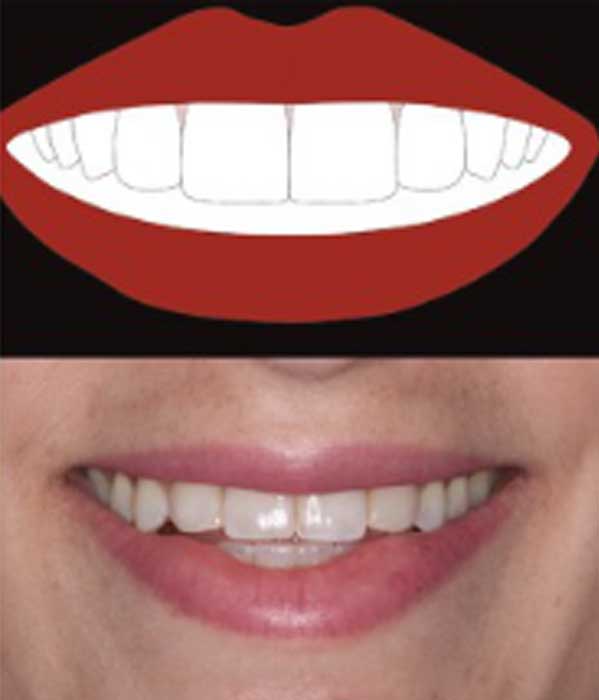
low smile, characterized by clinical crown exposure not greater than 75% and no gingival tissue.
Buccal corridors
Wider buccal corridors ( narrow smile arch) are considered unesthetic.
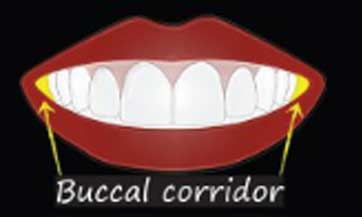
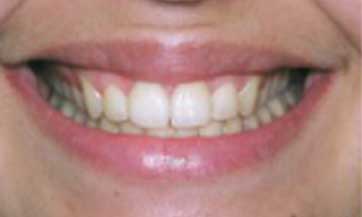
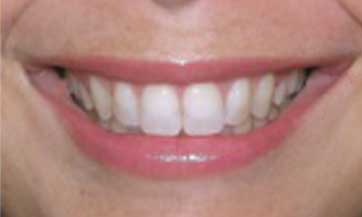
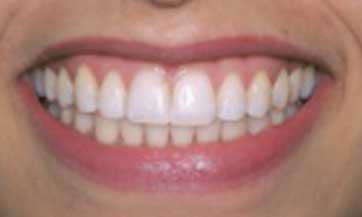
Dental midline and teeth angulation
Upper and lower dental midlines must be coincident and dental midlines should be in coherence with the facial midline. Teeth in the esthetic zone have ideal angulations as per the normal occlusion. Any excessive angulation with or without incisal cant is unesthetic and should be corrected.
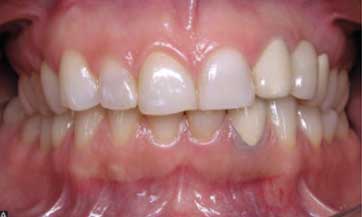
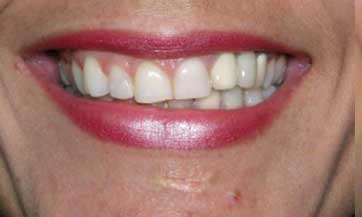
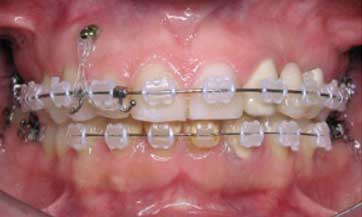
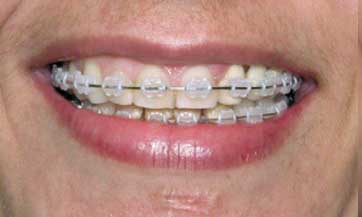
Tooth color and anatomical shape
Teeth should be white in colour with natural shades to compliment esthetics with relation to skin tone. Discoloured teeth are unesthetic and should be bleached or crowned.
Anatomical shape of teeth and location of contacts also important for natural smile esthetics. Selective recontouring of teeth along with orthodontic treatment to level contacts and teeth angulation may be required to correct deviations from normal.
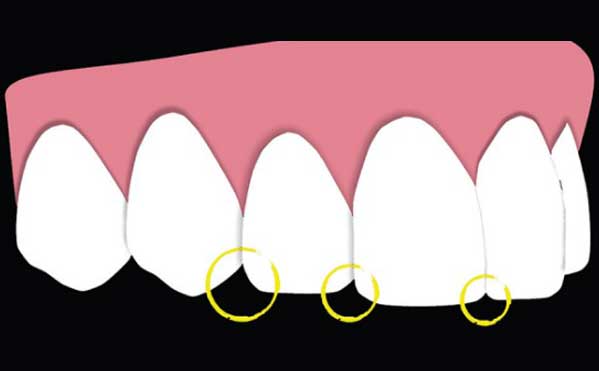
Diagram illustrating the ideal disposition of incisal embrasures, showing a natural and progressive increase from central incisors to canines.
Lip volume
Volumenous lips and complete incisal exposure are necessary elements for an esthetic smile. Fuller lips compliment esthetic smile. Altering the incisor position also changes the fullness of lips. Therefore over retraction of incisors should be avoided in individuals with thinner lips.

